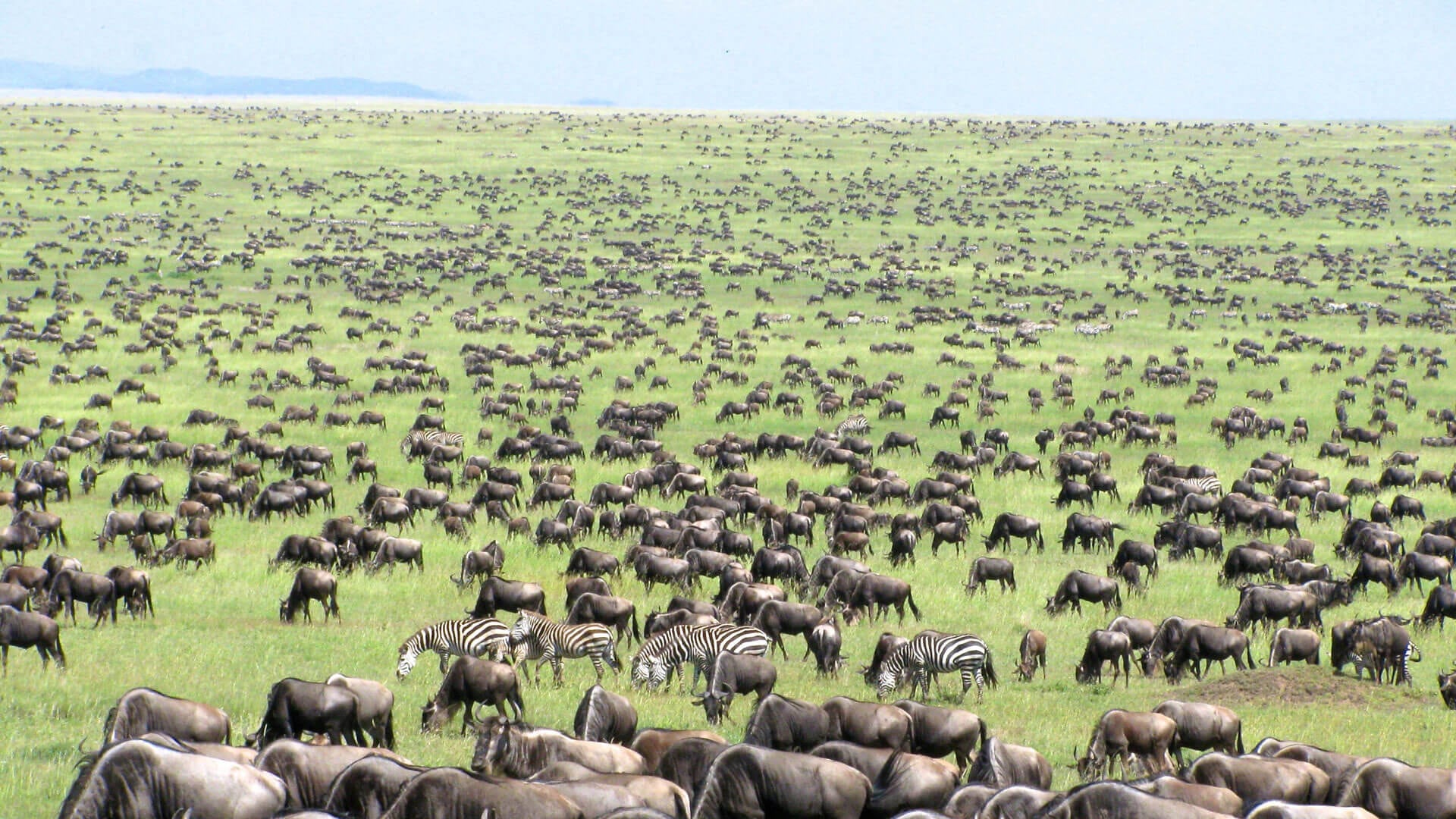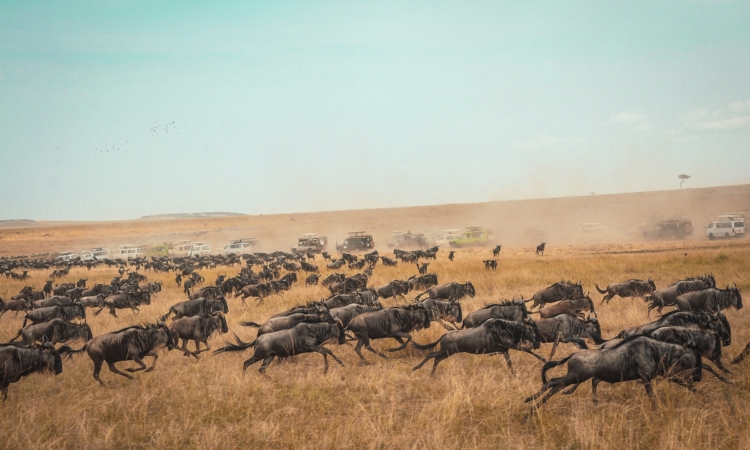Every year in Tanzania, over 1.5 million animals move from Serengeti national park to Masai Mara game reserve covering a distance of 800 to 1000 kilometers. This has been dubbed as one of the 7 natural wonders of the world hence attracting millions of tourists annually.
The migration doesn’t only involve wildebeests but also other antelopes that join the migration. The wildebeests migration is a big support to the Serengeti eco system from softening and nourishing soil with hooves and their urine, most big cats hunt the migration herds and once they are done feasting other carnivores like hyenas and jackals eat the remaining leftovers.

What triggers the migration
What triggers the migration? The exact trigger for the migration is not known but through study and research over the years, scientists, conservationists and researchers have concluded that the cause of the migration is scarcity of water and grass at the end of the rain season triggering the animals to move in search of better pastures.
The earth contains a magnetic field that humans might not see it without a compass, the animals are sensitive and feel it hence using it to guide their migration patterns.
The movement is not luxurious but comes with migration herds. Overcoming many obstacles along the way but despite all the challenges, the migration herds still presses on. The main danger they face is predation, starvation, drowning and thirst. The herds consume about 5000 tones of grass.
At the beginning of the year from January to early March, about 400,000 calves are born from Ndutu plains. When the young ones have gained enough energy by the end of Mar h is when the movement starts.
The search for fresh pastures is however not easy as this animals go through challenges along the way. The migration doesn’t only contribute to the ecosystem of Serengeti and Masai Mara national park. But also to the economy of Tanzania and Kenya when millions of tourists visit to witness the migration Every year.
The migration takes place throughout the year in interesting stages like calving and river crossings that interests most people.
Although researchers and scientists have come to a conclusion that the herds move every year searching for greener pastures and water. Both of these national park and reserve receive almost the same amount of rainfall. With Masai Mara receiving slightly higher amounts of rainfall. Some scientists hypothesize the Serengeti to have higher forage capacity than the Mara.
Plan for the great wildebeest migration by contacting our migration safari companies or inquire with us below to plan for your safari tour with us.









